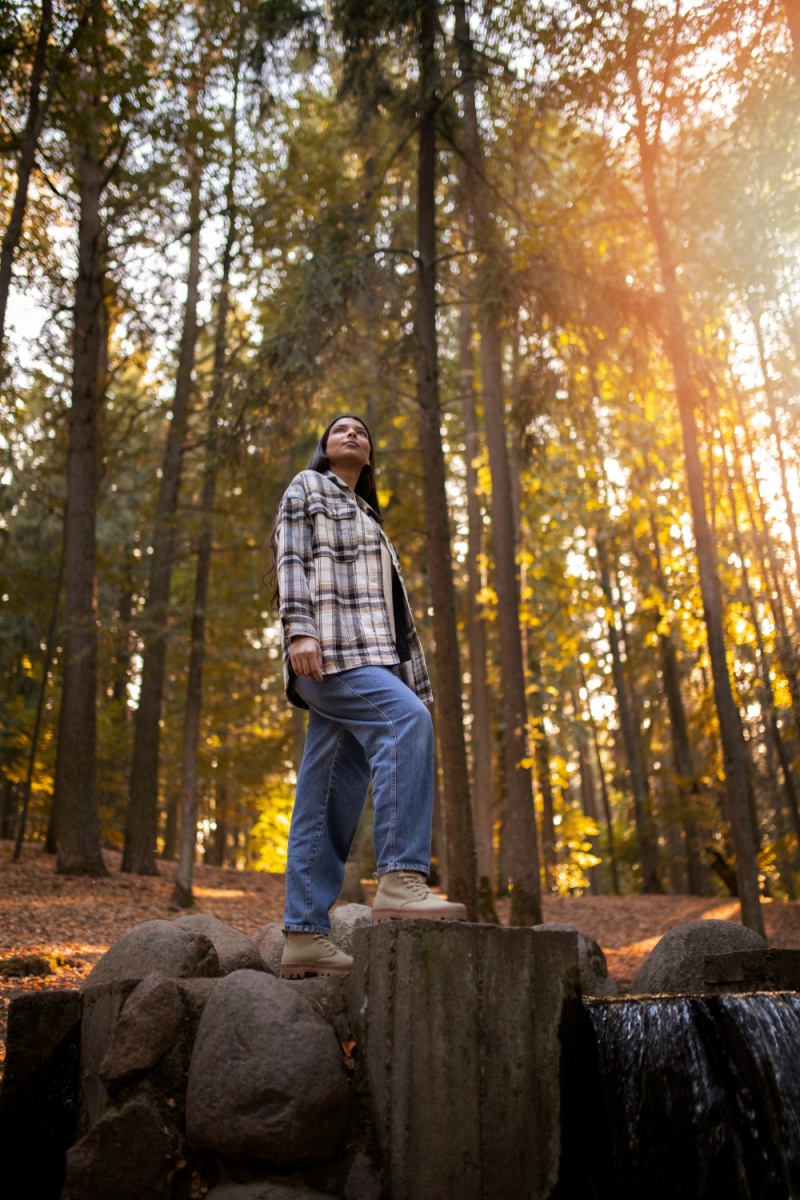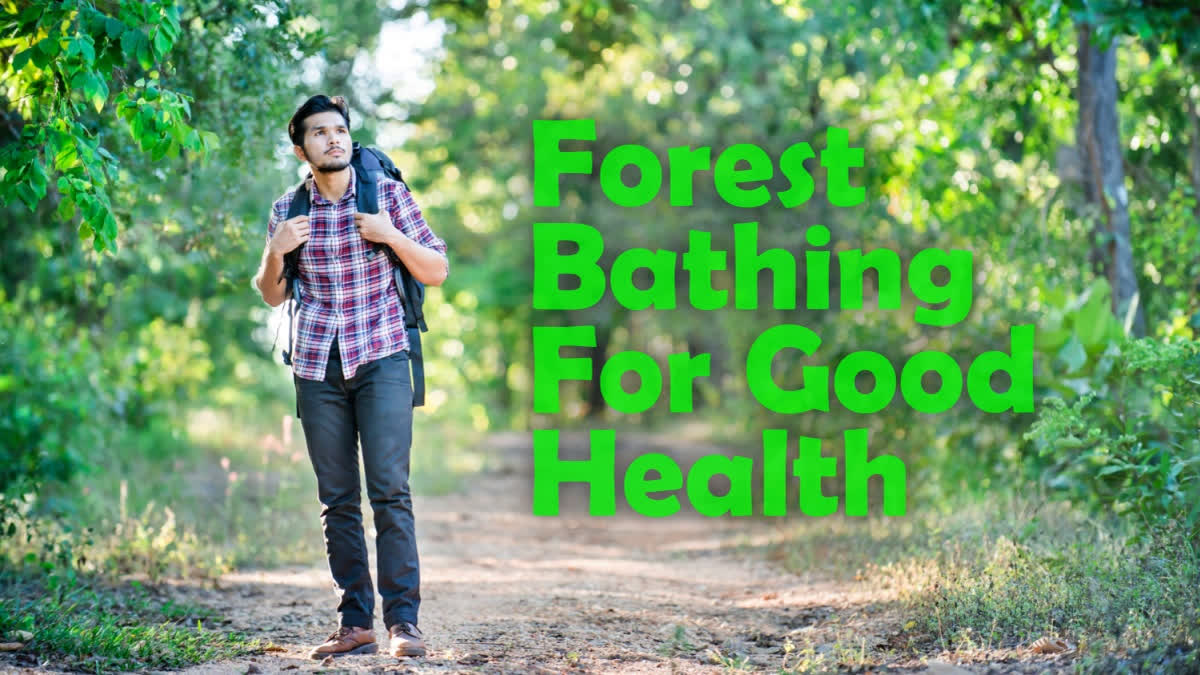On 4th February, the Princess of Wales Kate Middleton shared an image on her social handle that was more than just a simple portrait. In the misty embrace of a winter woodland, she stood tall on a fallen tree. It was a nod to a practice she has long championed: forest bathing. It was one of the wellness trends that ETV Bharat had predicted would take off in 2025, and it has!
British royalty Kate is currently in remission from breast cancer, so sharing the photograph on World Cancer Day was a public proclamation of her recovery. The photograph was clicked by her adorable six-year-old son, Prince Louis. “Don’t forget to nurture all that which lies beyond the disease,” read a message posted with the snap and signed in her own handwriting.
Kate has been a strong advocate for the benefits of nature. Back in 2019, she helped design a garden for the Chelsea Flower Show, inspired by the idea of forest bathing. Called 'Back to Nature,' the garden featured a wooden treehouse and a bridge over a gently flowing stream. The goal was to highlight how spending time outdoors can improve both physical and mental well-being. At the time, she had told the media, “I believe that spending time outdoors when we are young can play a role in laying the foundations for children to become happy, healthy adults.”
What Is Forest Bathing?
Known as shinrin-yoku, the practice originated in Japan in the 1980s. At its core, forest bathing is simple: walking slowly through a forest, engaging all five senses, and allowing nature to work its quiet magic. But what if this seemingly basic act is, in fact, an overlooked pillar of human health?
“You do not need to perform any separate activity or go through a prescribed series of steps to feel rejuvenated. Simply being present in nature, attuned to its rhythms, brings about a sense of peace and well-being,” says yoga expert Neeraj K, author of the book My Journey With Forest Bathing. He regularly leads forest bathing retreats with DeLotus for city folk looking for rest and relaxation.

The Roots of Forest Bathing
In the 1980s, as Japan faced a burnout crisis, the country’s Ministry of Agriculture, Forestry, and Fisheries proposed an unusual remedy: spend more time in the woods. Their argument wasn’t based on vague notions of relaxation. It was rooted in hard data. Dr. Qing Li, a professor at Nippon Medical School in Tokyo, has spent decades studying the physiological effects of forest environments on the human body.
His findings were that spending time in a forest can lower cortisol levels, reduce heart rate, and boost immune function. In one of his most well-known studies, Li sent participants into the woods for three days. By the end of the trip, their levels of natural killer (NK) cells (white blood cells that help fight cancer) had increased by 50%. These elevated levels persisted for over a month. Li concluded that something in the forest air — specifically, phytoncides (natural compounds released by trees) — was responsible for this boost in immunity.
The International Journal of Environmental Research and Public Health published a study in 2021 reinforcing the link between time spent in forests and increased NK cell activity. These cells play a crucial role in detecting and destroying cancerous or virus-infected cells in the body.
Research-backed Health Benefits
The idea that being in nature is “good for you” is hardly new. But what makes forest bathing different from, say, a jog in the park?
A 2020 meta-analysis found that individuals who engaged in forest bathing experienced significantly lower blood pressure and heart rate compared to those who walked in urban environments. The forest seemed to have a calming effect that extended beyond simple physical activity.

In a 2015 study conducted at Stanford University, researchers found that individuals who walked in a forest for 90 minutes showed decreased activity in the subgenual prefrontal cortex (the area of the brain linked to rumination and depression). Urban walkers, by contrast, did not experience the same benefit.
A 2012 study by the University of Kansas found that participants who spent just a few days in nature showed a 50% improvement in creativity and problem-solving skills. There’s a reason why some of history’s greatest thinkers (from Henry David Thoreau to Steve Jobs) frequently retreated to nature for inspiration!
How To Practice Forest Bathing
Forest bathing doesn’t require special training, equipment, or fitness levels. It is, at its core, about presence... about noticing the world around you in ways you normally wouldn’t.
1. Find A Forest
You don’t need to travel to an ancient woodland in Japan. Any natural space (a quiet park, a trail lined with trees) can offer similar benefits. The key is to choose a place where nature dominates and distractions (traffic, screens, noise) are minimal.
2. Slow Down. Way Down.
Unlike hiking or jogging, forest bathing isn’t about covering distance. Walk slowly, without a set destination. The goal is not to get anywhere... it’s to be where you are.
3. Engage All Five Senses
- Sight: Notice the way light filters through the leaves. Observe the intricate details of tree bark.
- Smell: Inhale deeply. The forest air is rich with phytoncides, the organic compounds that help boost immunity.
- Sound: Listen to the rustling leaves, the distant call of a bird. Let the forest's natural rhythms replace the artificial hum of daily life.
- Touch: Run your fingers along the rough bark of a tree. Feel the coolness of a stream.
- Taste: If you’re in a safe, familiar environment, try tasting the air. There’s a reason fresh mountain air “tastes” different from city air.
4. Leave the Phone Behind
Yes, your phone has a great camera. Yes, you might want to track your steps. But for the full benefits of forest bathing, keep your devices off. The absence of digital distractions allows your mind to reset.
5. Breathe Like You Mean It
Deep, intentional breathing enhances the effects of forest bathing. Try the 4-7-8 method: inhale for four seconds, hold for seven, exhale for eight.
6. Stay As Long As You Can
A 20-minute session can reduce stress. A two-hour session can lower blood pressure. A three-day retreat? It can supercharge your immune system.
The modern world demands speed. We are always connected, always productive, always on edge. The irony is that the very technology designed to make our lives easier has made our bodies more stressed than ever. Forest bathing offers an antidote.
References:
- https://pmc.ncbi.nlm.nih.gov/articles/PMC9665958/
- https://environhealthprevmed.biomedcentral.com/articles/10.1186/s12199-020-00856-7
- https://www.mdpi.com/1660-4601/18/9/4790
- https://www.frontiersin.org/journals/psychology/articles/10.3389/fpsyg.2024.1458418/full
- https://www.pnas.org/doi/full/10.1073/pnas.1510459112
- https://journals.plos.org/plosone/article?id=10.1371/journal.pone.0051474
Read more:



